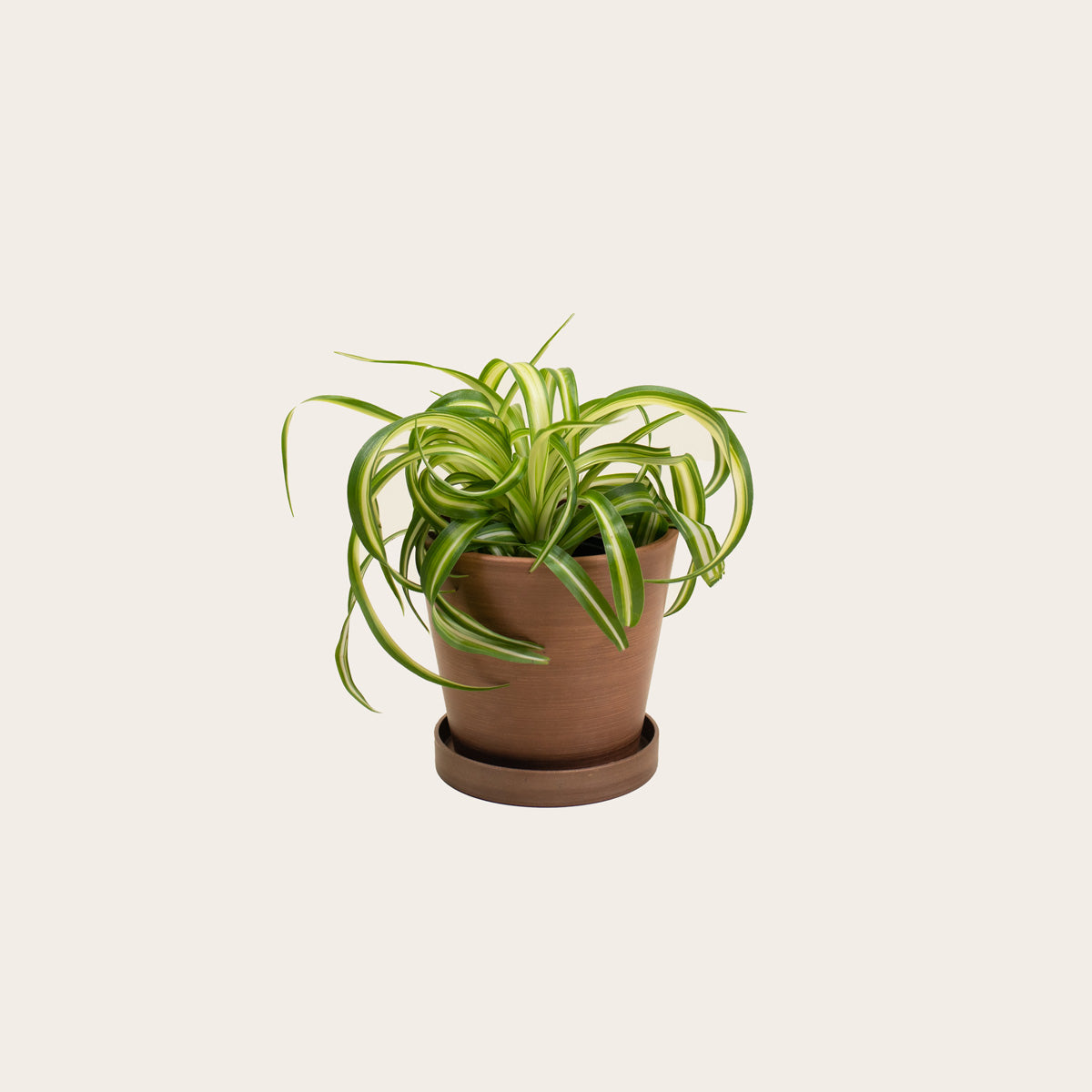Plant Details

Low - Bright Indirect Light
This plant will thrive and grow the strongest in a bright indirect light, but is flexible and will tolerate most lighting scenarios, down to a low light.

Minimal
This plant prefers to dry out most of the way between waterings, allow ½ - ⅔ of the soil to dry before giving a full watering. Increase watering frequency with increased light.

Pet-friendly
This plant is safe for your pets!
.png)
More Info
The Spider Plant “Bonnie” is similar to the classic Spider Plant we love, but features thicker, curly ribbon-like leaves and high contrast coloring. They love bright indirect light for maximum growth, but can tolerate lower light to decorate darker spaces.
Protip: You can choose whether you want your Spider Plant to grow full and large, or to grow pups. As the plant matures, if you choose to repot it, it will grow full and large without any pups. If you decide not to repot, the plant will become slightly rootbound, which encourages it to use its energy producing pups. These baby plants will grow as offshoots from the main plant, and will begin to grow thick nubby roots while they are attached to the mother plant via the offshoots. Once the thick roots reach an inch or so in length, you can simply repot them directly into fresh organic potting soil. Alternatively you may remove the pups before roots have formed, placing the bottoms of the baby plants in water until roots form, and then potting into soil.








